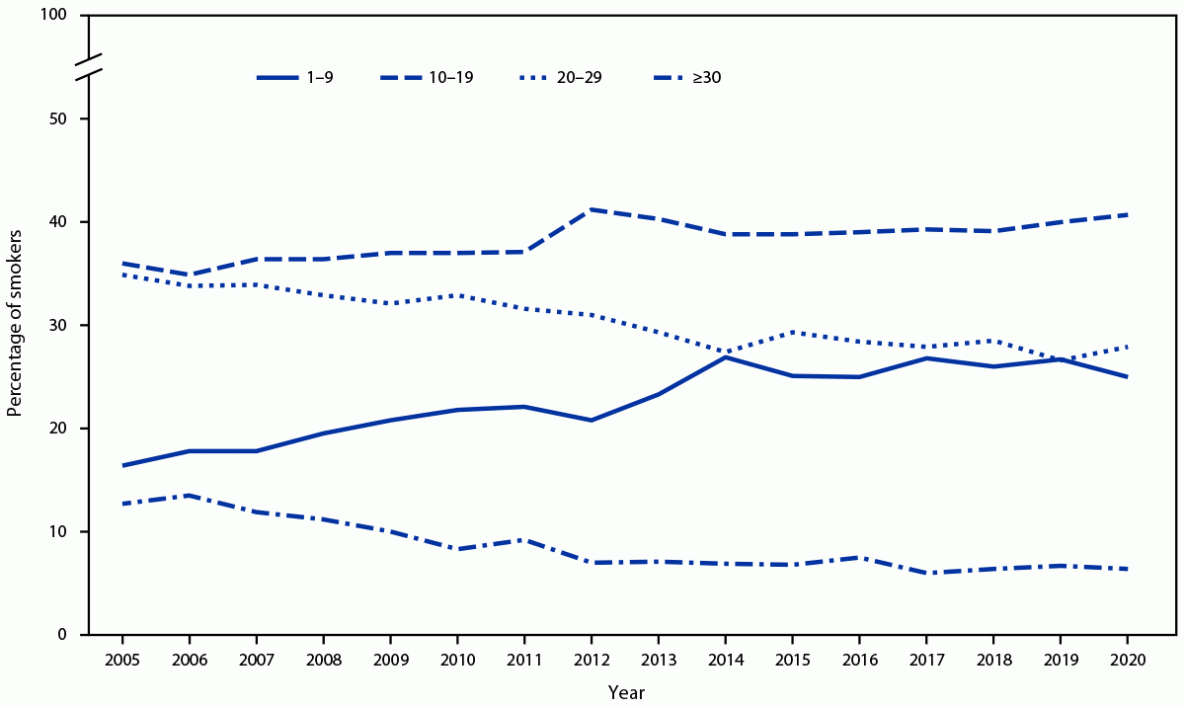Describe the Rate of Tobacco Use in the United States
By state in 2015 smoking prevalence ranged from between 91 and 128 in Utah to between 237 and 274 in West Virginia. 90 May 10 2016 This item is facing legal challenge.

Infographic The Global Burden Of Tobacco
Epidemiology of tobacco use in the United States.

. And is responsible for nearly 443000 deaths annually 12. Tobacco use in the United States has declined dramatically over the past 50 years with the prevalence of cigarette smoking falling from about 42 of all adults to less than 20 by 2007. In 1998 tobacco use varied within and among racialethnic groups.
95 CI 102-116 or drug OR 163. Tobacco and substance use disorder rates were highest for hospitalizations use disorder OR 167. Meanwhile back in the US many groups are rededicating themselves to driving rates of smoking down to under 10 percent.
Happily were spoiled in the US by being relative smoke free in communal places. 95 CI 127-220 and black race with alcohol OR 109. 95 CI 153-174 use disorder.
Research indicates that about 15 of adult males and females within the United States either use tobacco products or have done so in the past Jamal et al 2017. By contrast in 2011 less than 20 of adults were current smokers with significant variations from state to state 18. 4 As a result of widespread tobacco use approximately 443000 Americans die from tobacco-related illnesses such as cancer and heart disease each year.
The prevalence of the use of cigarettes e-cigarettes and cigar use was statistically equivalent between transgender and cisgender populations in this national study of adults in the United States which differs from previous research showing higher rates of tobacco use among transgender individuals. Tobacco distribution is measured in the United States using the term tobacco outlet density An estimated 343 million people or 14 of all adults in the United States smoked cigarettes in 2015. Tobacco use behaviors have changed significantly over the past century.
My recent visits to China and Cuba underscored the ubiquitous use of tobacco around the world. Tobacco use remains the leading cause of preventable mortality and morbidity in the US. The prevalence of smoking was highest among American IndiansAlaska Natives and second highest among black and Southeast Asian men.
Medicaid insurance or income in the lowest quartile were associated. Figure 6-1also shows that the average state excise tax on cigarettes has increased by more 3 cents to 29 cents than the federal tax 8. Only about 4 of such population resort to seeking therapy and counseling to cease using them.
Although cigarette smoking has declined significantly since 1964 disparities in tobacco use remain across groups defined by race ethnicity educational level and socioeconomic status and across regions of the country. In this chapter the committee uses a socioecologic framework Figure 3-1 to examine the factors that encourage and sustain tobacco use in military and veteran populations. Restrictions on the Sale and Distribution of Tobacco Products and Required Warning Statements for Tobacco Products 81 Fed.
Department of Cancer Prevention Epidemiology and Biostatistics Roswell Park. As of November 1 1993 the average price per pack of cigarettes was 179 of which 53 cents was due to taxes 30. African American children are more likely to be exposed to secondhand smoke.
Compared to 1964 smoking prevalence rates have halved from 40 to 20 and as a result there has been a slow but steady decline in the rates of tobacco-induced diseases such as. In fact tobacco use remains the leading preventable cause of disease and death in the United States 1 leading to more than 480000 deaths. The percentage of adults who never smoked increased from 44 in the mid-1960s to 55 in 1997.
In 2009 an estimated 206 of all American adults age 18 and older466 million peoplesmoked 3 and every day another 850 young people age 12 to 17 began smoking on a daily basis. Smoking also accounts for 193 billion in health-care expenditures and productivity losses7 Despite the pervasive influence of the tobacco industry there have been dramatic declines in smoking rates in the United States since the release of the Surgeon Generals Report on Smoking and Health in 19641 The overall US smoking rate in persons 18 years and older dropped to an. In 1965 approximately 42 of adults were current smokers 52 of men and 34 of women 17.
If this rate of decline continues smoking could be eliminated in the United States by 2047. Deeming Tobacco Products To Be Subject to the Federal Food Drug and Cosmetic Act as Amended by the Family Smoking Prevention and Tobacco Control Act. Tobacco has a long history in the United States.
The decision to use and continue to use a tobacco product depends on many factors from personal ones such as self-image to societal ones such as easy access to cigarettes. Tobacco use has serious effects on the health of users.

Infographic The Global Burden Of Tobacco

Vibrio Vulnificus Causes An Estimated 80 000 Illnesses Worldwide And 100 Deaths In The United States Every Year What Is Vibr Food Borne Illness Health Oysters

Large And Growing Housing Deficit Latin America America Latin

Poll U S Smoking Rate Falls To Historic Low Infographic

Pin By Lyssa On Tobacco Sustainability Greenhouse Gases Poster

Infographic The Global Burden Of Tobacco

Rabbitsfootcustombrews World Health Organization British American Tobacco Health

Pin On Health News Tips For Women

Other Ways To Describe The Magnitude Infant Mortality Rate Infant Mortality Baltimore City










Comments
Post a Comment